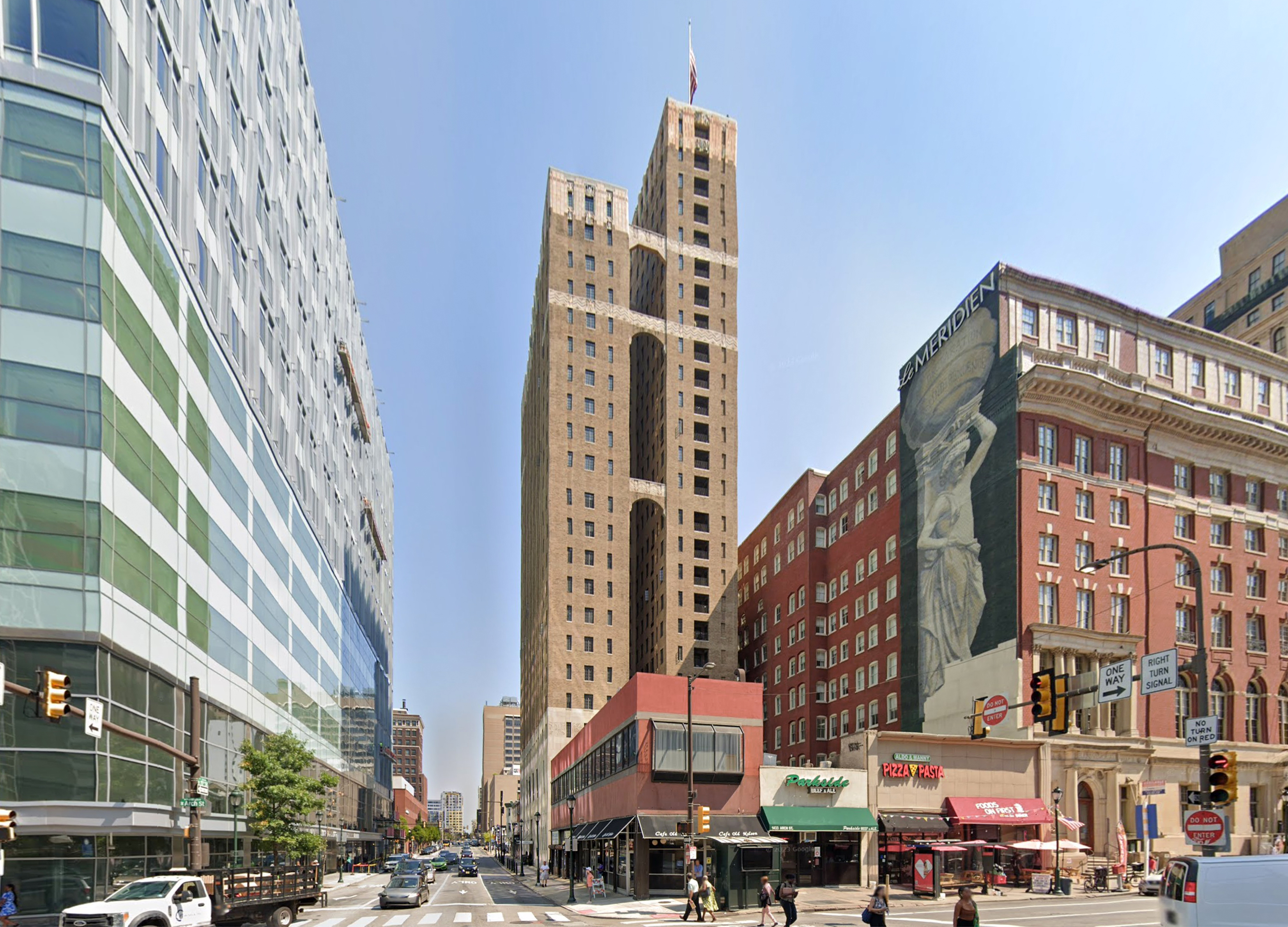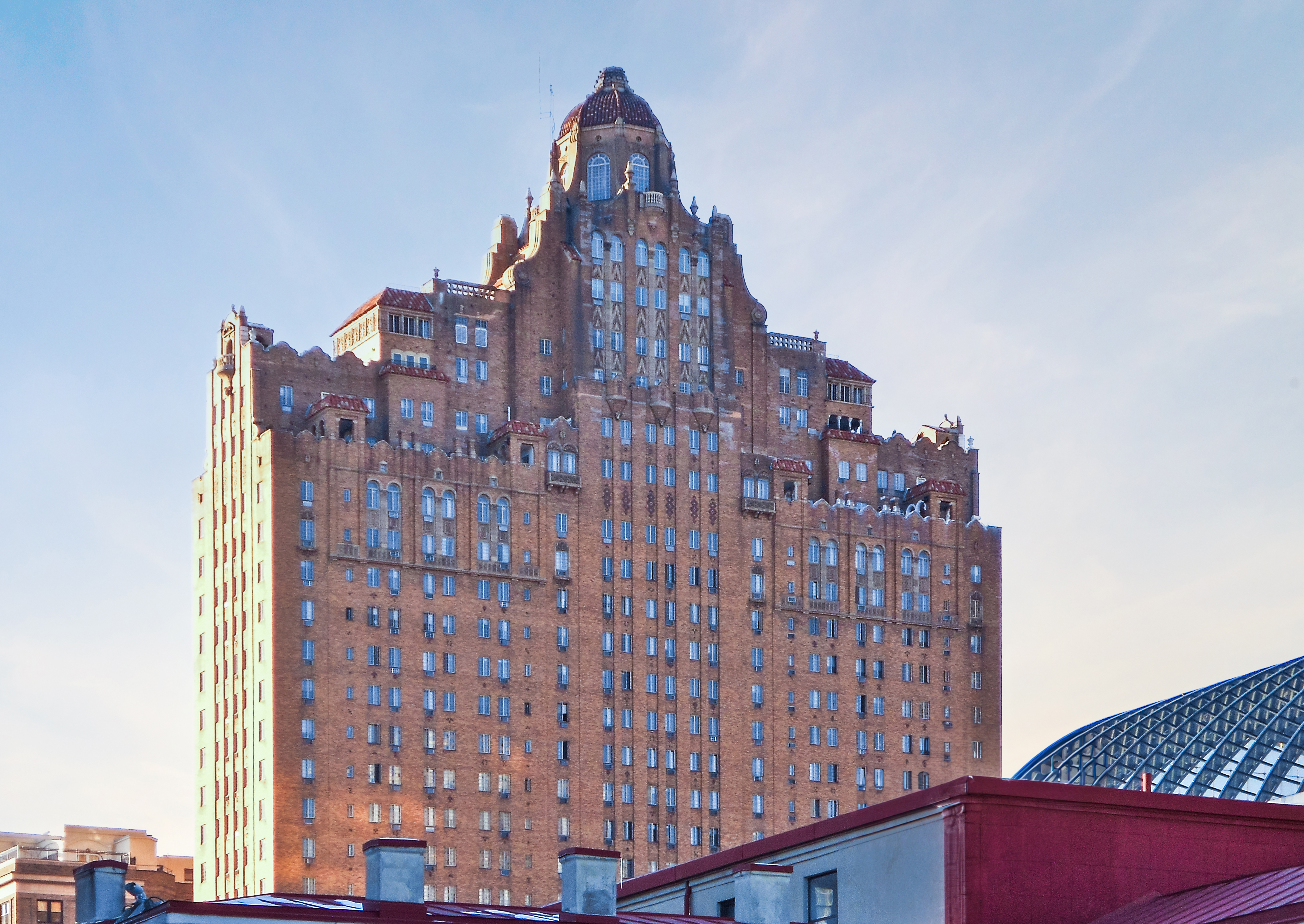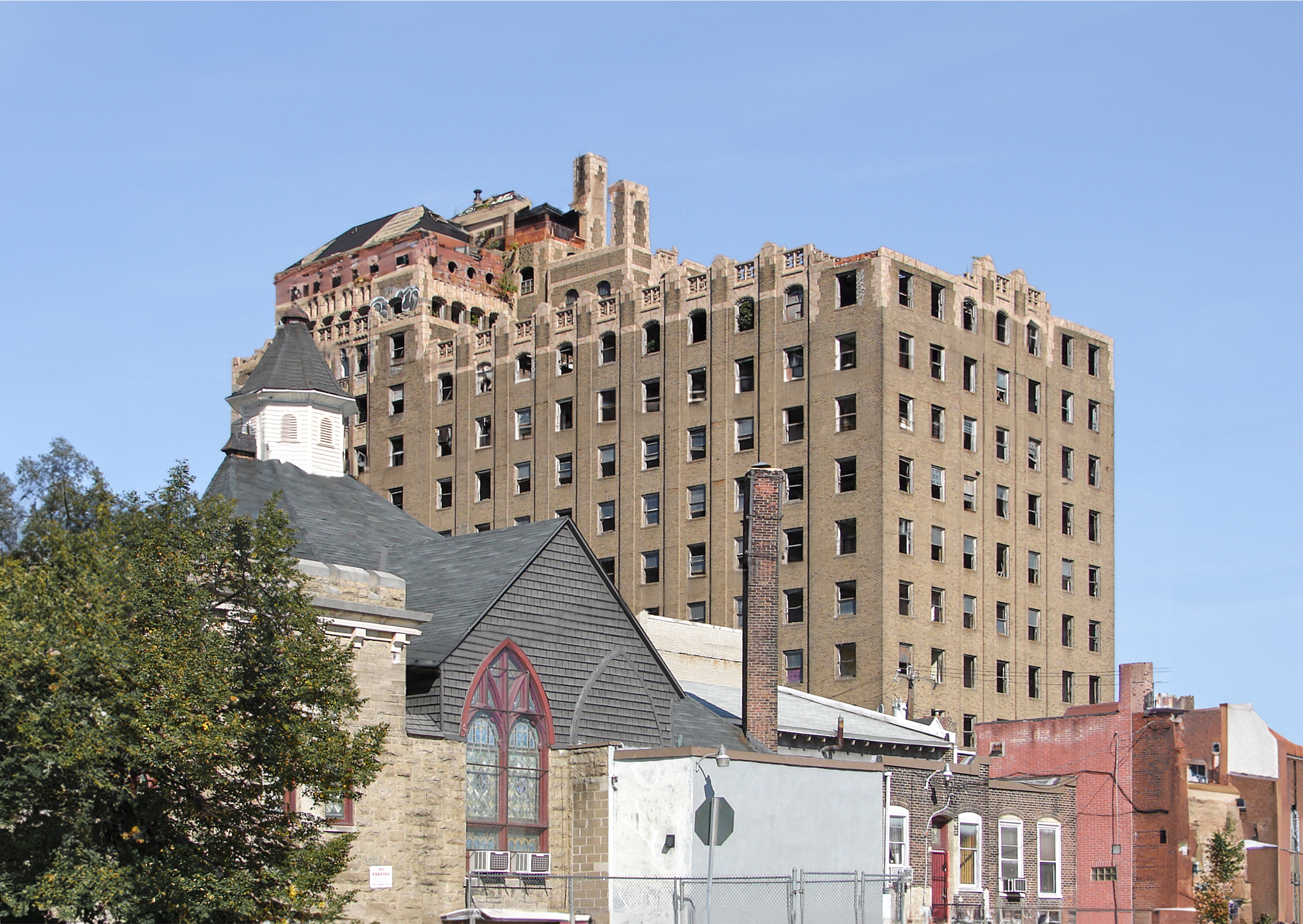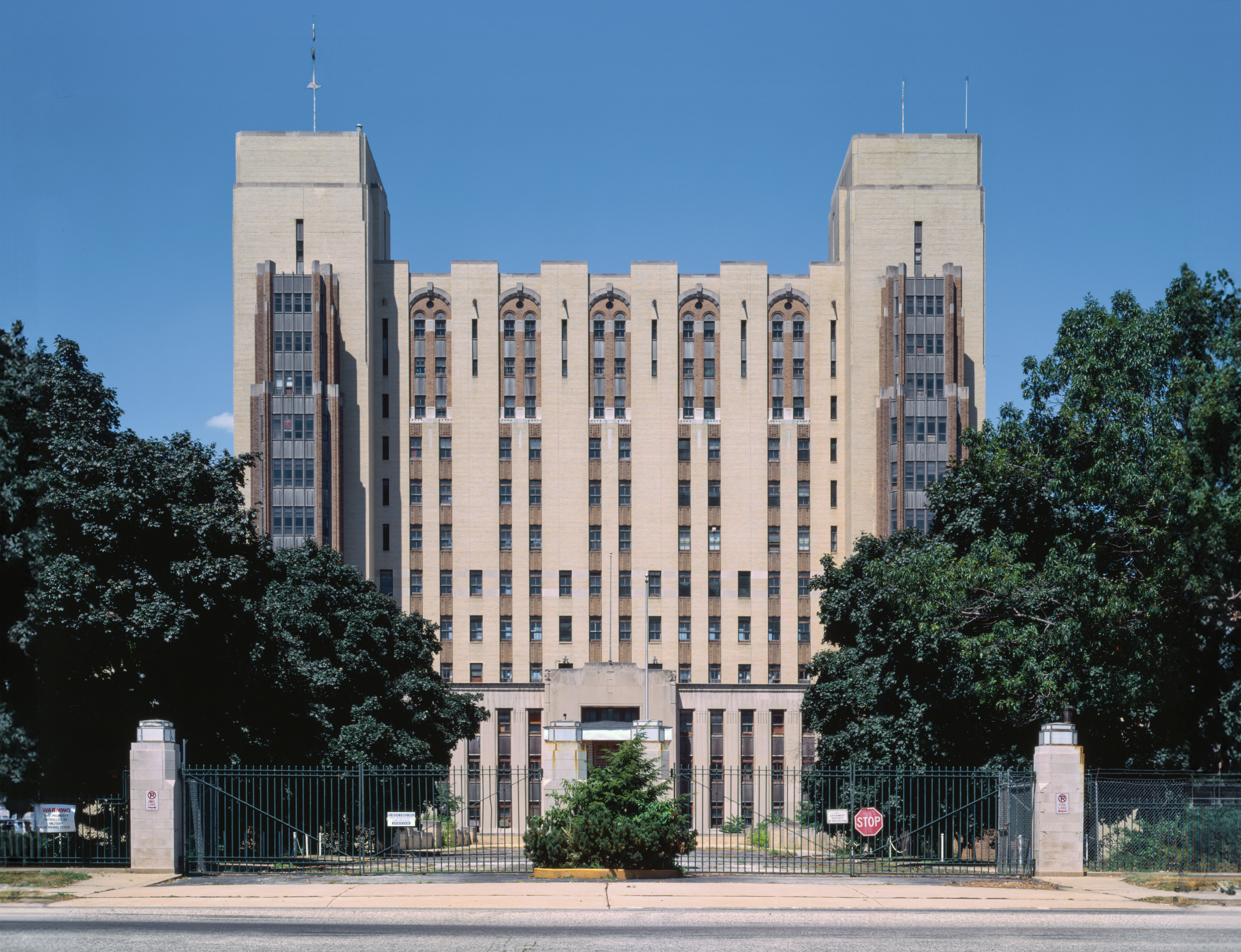The YMCA Philadelphia is an Art-deco skyscraper designed by Louis El Jallade and built between 1926 and 1928 in Philadelphia, PA.
YMCA Philadelphia is not the only name you might know this building by though. It is common for companies to want to attach their names to iconic buildings when they move in, or for the general public to come up with nicknames, and this one is no exception. The building has changed names several times over the years, and is also known as:
- YMCA Armed Forces Building.
- Young Men's Christian association Building.
- The Metropolitan.
- Metropolitan Apartments from 1980 until this day.
Its precise street address is 115 N. 15th St, Philadelphia, PA. You can also find it on the map here.
The building underwent a major restoration in 1980.





